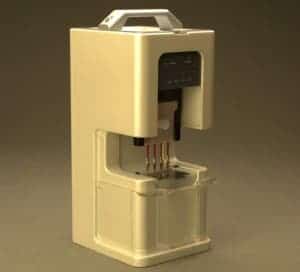
The human genome has been sequenced a mere few years ago, and since then a great deal of advancements have been made in the field. This is extremely important since in the future, personalized medicine needs each individual’s genetic markup such that treatment may get the most effective punch or diseases and afflictions might be avoided altogether.
The DNA sequencing industry is growing rapidly, having turned into a multi-billion dollar industry. Since the turn of the new millennium, however, a lot of companies have seen rapid growth, only to plummet at the hand of counter effective technology.
Collecting and sequencing DNA is still expensive, too expensive for gross use at least. That may soon change. For instance, University of Washington engineers and NanoFacture, a Bellevue, Wash., company, have recently unveiled a small, light-weight device that can allegedly collect viable DNA material for samples in mere minutes, instead of hours – all without risking damaging the DNA itself as is the case with current methods.
“It’s very complex to extract DNA,” said Jae-Hyun Chung, a UW associate professor of mechanical engineering who led the research. “When you think of the current procedure, the equivalent is like collecting human hairs using a construction crane.”
Chung isn’t overreacting at all. Current methods rely on centrifuges and chemical solutions, some of which are toxic, to extract DNA. Micro-filters that strain DNA from the bulk fluid is also commonly used. These methods are slow and expensive, however.
The UW device is comprised of tiny, microscopic probing tips that dip into a fluid sample – saliva, sputum or blood – and apply an electric field within the liquid. The field guides particles towards the surface of the probing tips, however larger ones bounces away while DNA molecules stick. Using this method, it takes only 2-3 minutes to purify and separate DNA. The researchers claim they can scale the technology to analyse 96 samples at a time, which is standard for large-scale handling.
A miniature version, the size and shape of a pen, has also been developed which patients can use to swipe saliva at home and ship them to hospitals where their DNA is readily separated and collected for analysis, without having to leave their homes.
Combined with other recent efforts geared towards cheap sequencing, the technology developed by Chung and colleagues might lend a great hand in the strive to form a huge medical DNA database to battle diseases.
[source University of Washington]






